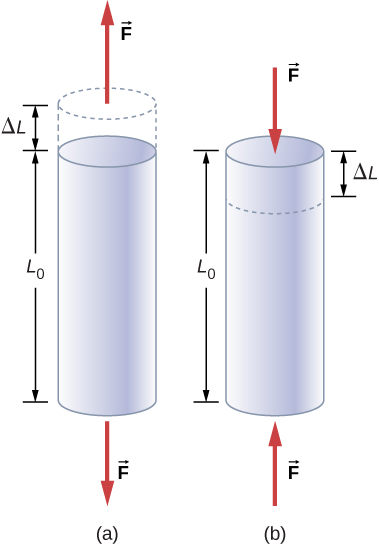| << Chapter < Page | Chapter >> Page > |
In either of these situations, we define stress as the ratio of the deforming force to the cross-sectional area A of the object being deformed. The symbol that we reserve for the deforming force means that this force acts perpendicularly to the cross-section of the object. Forces that act parallel to the cross-section do not change the length of an object. The definition of the tensile stress is
Tensile strain is the measure of the deformation of an object under tensile stress and is defined as the fractional change of the object’s length when the object experiences tensile stress
Compressive stress and strain are defined by the same formulas, [link] and [link] , respectively. The only difference from the tensile situation is that for compressive stress and strain, we take absolute values of the right-hand sides in [link] and [link] .

Young’s modulus Y is the elastic modulus when deformation is caused by either tensile or compressive stress, and is defined by [link] . Dividing this equation by tensile strain, we obtain the expression for Young’s modulus:

With the density of granite the mass of the pillar segment is
The weight of the pillar segment is
The weight of the sculpture is so the normal force on the cross-sectional surface located 3.0 m below the sculpture is
Therefore, the stress is
Young’s modulus for granite is Therefore, the compressive strain at this position is

Notification Switch
Would you like to follow the 'University physics volume 1' conversation and receive update notifications?